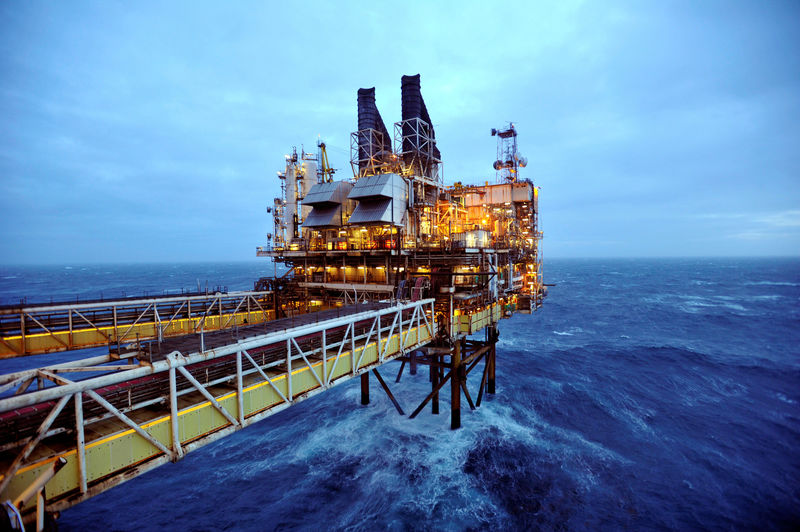By Amanda Cooper and Florence Tan
LONDON/SINGAPORE (Reuters) - OPEC production cuts have created record Asian demand for European oil and made China the second biggest consumer of North Sea crude as flows from its usual Middle East suppliers dip.
Rising Asian appetite for North Sea crude has largely been fuelled by the falling premium charged for North Sea crude over rival Middle East oil and this demand could last beyond OPEC's supply cuts if that favourable pricing persists.
Thomson Reuters Eikon data shows China imported almost 38 million barrels of North Sea crude from the start of the year until late April, compared with about 8 million barrels by the same point in 2016.
China now lies second to Britain, the biggest consumer of North Sea crude, which had bought 49.7 million barrels by late April this year. In January to April 2016, China ranked seventh.
The Organization of the Petroleum Exporting Countries, Russia and other non-OPEC producers agreed to cut output by 1.8 million barrels per day (bpd) in the first half of 2017 to lift prices and reduce global inventories.
With stockpiles still bulging, Gulf producers and other producers say cuts could be extended to December, adding a further incentive for Asian buyers to look beyond their usual suppliers.
"East of Suez, crude balances look like they will get progressively tighter year-on-year all the way through to the end of 2017," FGE analyst James Davis said.
"We suspect there will be, from a supply perspective, a need for crude to move across to Asia from the North Sea," he said.
Reluctant to relinquish market share to U.S. oil shale producers, OPEC states have kept their official selling prices low and used their crude stockpiles to keep clients supplied.
But they have tended to cut output of medium, more sulphurous crudes that are cheaper, and maintained flows of lighter, less sulphur-rich oil, which usually sell for more.
With less of those medium crudes on the market prices for that oil have climbed, sending the premium that is usually paid for North Sea oil to its lowest since 2010
CRUDE DIET
The premium for North Sea Brent, the peg for many of world's lighter crudes, over the Dubai benchmark, which underpins medium and heavier grades common in the Middle East, has fallen below 50 cents a barrel from $2.50 in late November, when OPEC announced its cuts.
"North Sea crude keeps coming to Asia and now there should be more given the price structure," a trader at a North Asian refinery said.
China customs data shows the cost of importing North Sea oil was even more favourable in March, showing importing a barrel of British crude cost $56.70, compared with $57.80 for a barrel from the United Arab Emirates, even when the UAE lies 8,000 miles closer to China than Scotland's North Sea coast.
"North Sea oil suits the Korean diet and the Chinese can still take it if the price is right,” a Singapore-based trader said.
Other factors are also encouraging Asian consumers to seek out new suppliers. Chinese domestic oil production has been eroded because of weak oil prices, while refineries in the world's biggest car market have been expanding.
Overall, Asian refining capacity will expand by a net 450,000 bpd in 2017, a rise of 1.5 percent over Asia's total installed capacity now of nearly 29 million bpd, Thomson Reuters Eikon data shows.
"We expect imports to continue registering year-on-year gains as a narrow Brent-Dubai spread ... encourages the purchasing of Atlantic Basin crudes in Asia," Energy Aspects said in a note, even though it said China had "clearly overbought" crude in the first quarter of the year.
For a graphic on North Sea crude oil flows to Asia, click - http://reut.rs/2q6pDo4
For a graphic on Biggest buyers of North Sea crude oil, click - http://reut.rs/2q6pDo4
For a graphic on North Sea crude flows to China vs Brent/Dubai premium, click - http://reut.rs/2q7g3B2
